In February, Assistant Curator for Exhibitions, Lily Hayward, took the Year 5s of North London’s Frith Manor School on a trip to the depths of outer space. The students had already been learning about the planets and the Moon in their science classes, so it was time for them to learn about the realities of living in space.
First, they blasted off to the space stations to discover what life is like in low Earth orbit and how zero-gravity changes the body. From discovering that puffy-face-chicken-leg syndrome is a real medical condition, to making a zero-gravity lunch menu, and learning about resource recycling, the students learnt about the good the bad and the ugly of living in orbit.
Next the crew headed to the Moon. The young astronauts were warned about the dangers of radiation, lethal levitating dust, but also learned about some interesting uses for human poo… Who would have thought that humans might be able to live in buildings made from moon dust human feces and fungus?
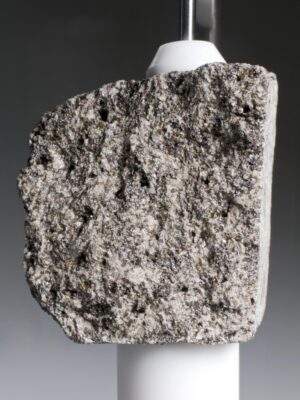
Finally, the group touched down on Mars. The harsh Martian environment poses many challenges to any future human explorers. Even the six-month journey to the red planet and back will expose crew to 60% of their lifetime dose of radiation. Morbid curiosity took hold of the classes’ imaginations and talk veered to how to bury a body on Mars…
Heads full of space knowledge, the Year 5s were asked to design their own moon base. Their moon bases must protect crew from deadly radiation and dangerous moon dust. They must also provide crew with oxygen, food, and water, as well as provide space to do science experiments. On top of all this, it must be pleasant to spend time in. The challenge aimed to consolidate what they have learned during the presentation, allowing them to process the information in a creative way.
Over the half term, the students drew, crafted, and wrote down their designs. There were some brilliant ideas, for example combatting loneliness on the trip using robots who would provide companionship and tell you jokes. Thank you to all the students who took part!
After reviewing the entries from the two classes that submitted designs, two were selected. Well done Aya and Jasraj!
Jasraj’s ambitious domed design included a shield to protect from radiation, freeing astronauts from cumbersome spacesuits, as well as a laser to signal for help. The base has a decontamination room for lunar dust, a recreational room, and a garden to grow produce. Importantly, the design includes a satellite for WiFi, solar cells to power the base, and a drill for mining important lunar minerals which scientists and private companies are keen to study and find uses for. Jasraj thinks space travel will be important for the future of humans, as we deplete Earth’s resources we may need to expand into the solar system. If he could, he would love to see the Earth from the Moon!
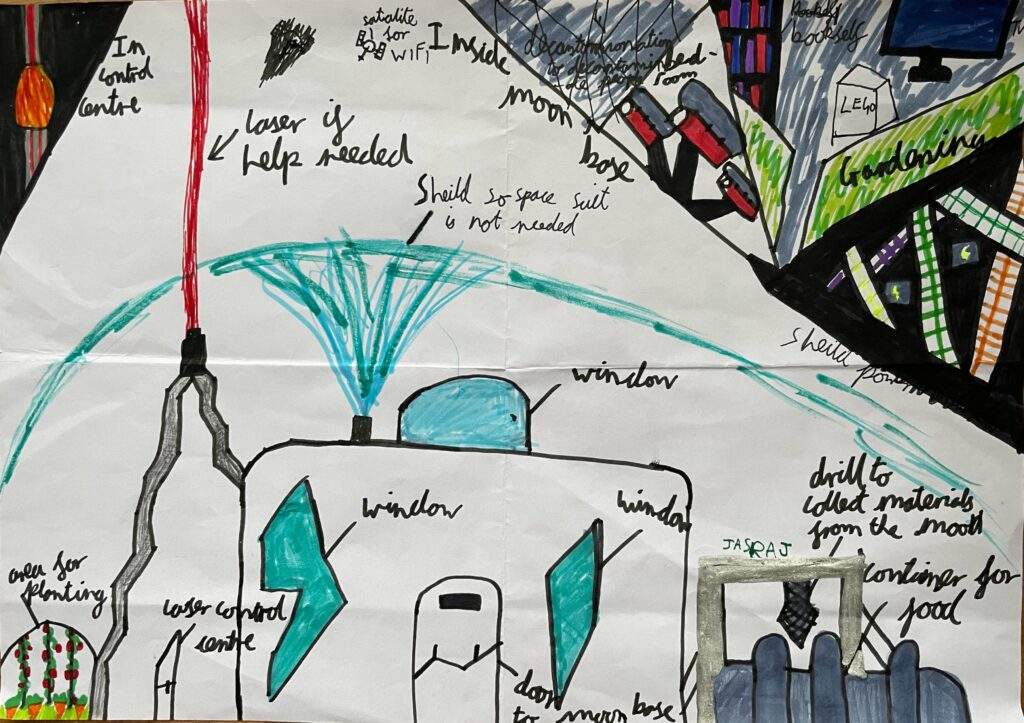
Aya’s moon base complex consists of five areas: a central base; an area for researchers and academics to observe space and write up academic papers; a place for science experiments to be carried out; a security room; and a living space. Her thoughtful and detailed design includes the manufacturing of new drugs suitable for human crew in space; how CCTVs will be used to monitor areas of high importance; the importance of collaboration to derive knowledge; even how astronauts will be kept cosy in microgravity by using magnets. Aya’s interest in space came from star gazing in Tenerife where she saw Mars from the top of Mt. Teide. She thinks taking samples from different celestial bodies will be important to science, to help us better understand the universe. While she acknowledges the perils of space travel, given the chance she would make the voyage!
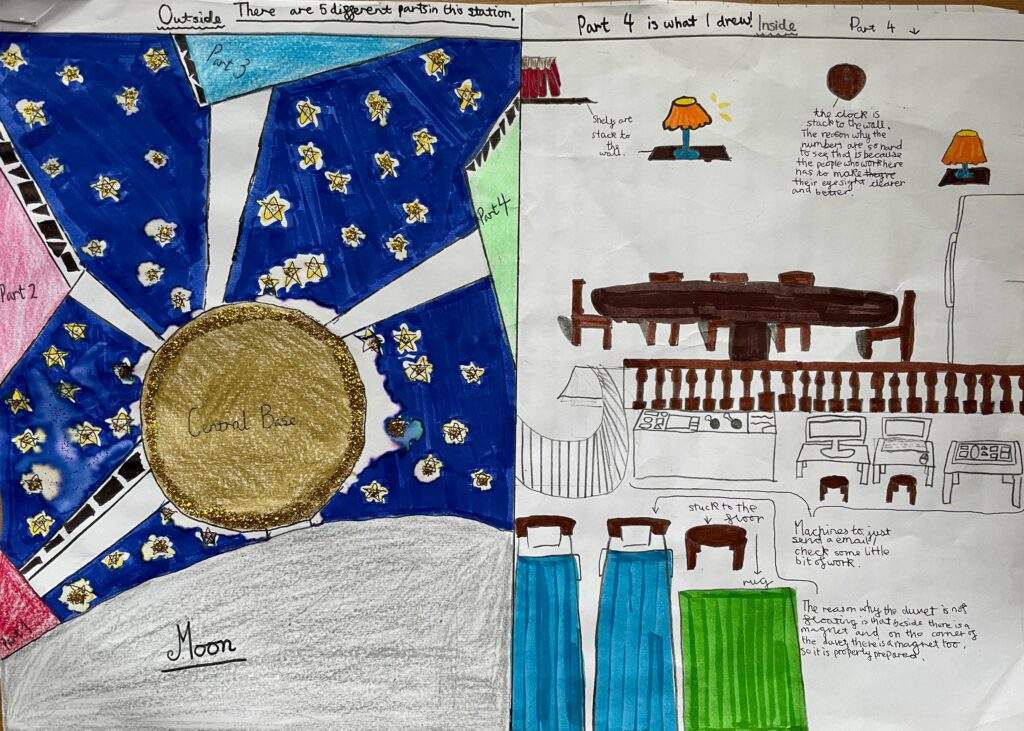
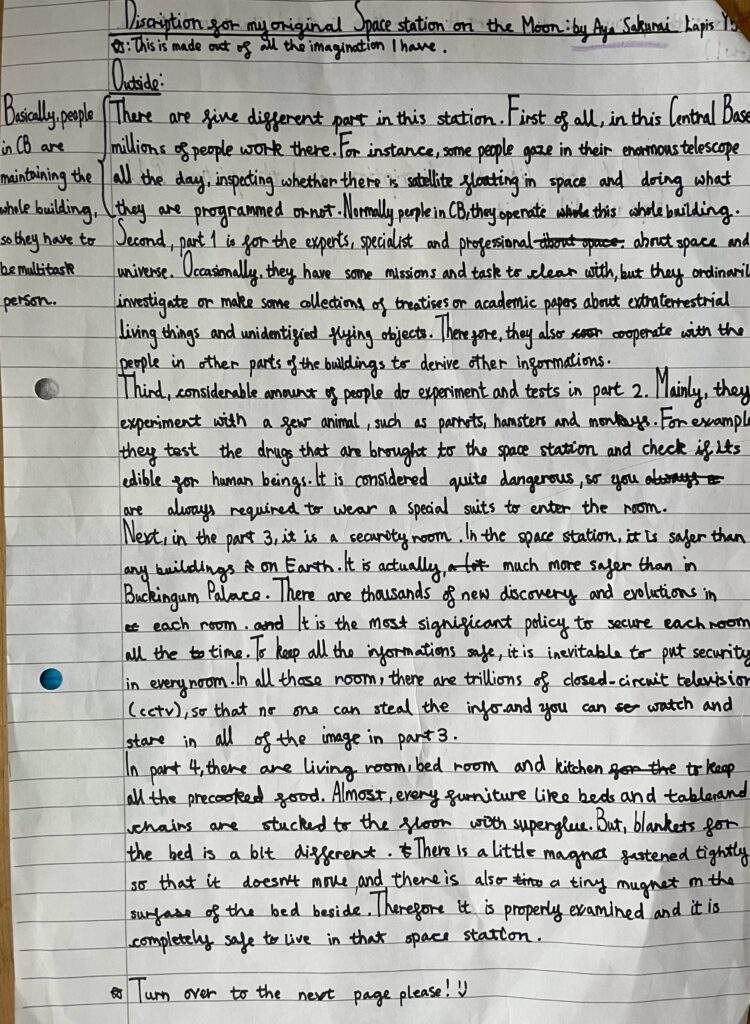
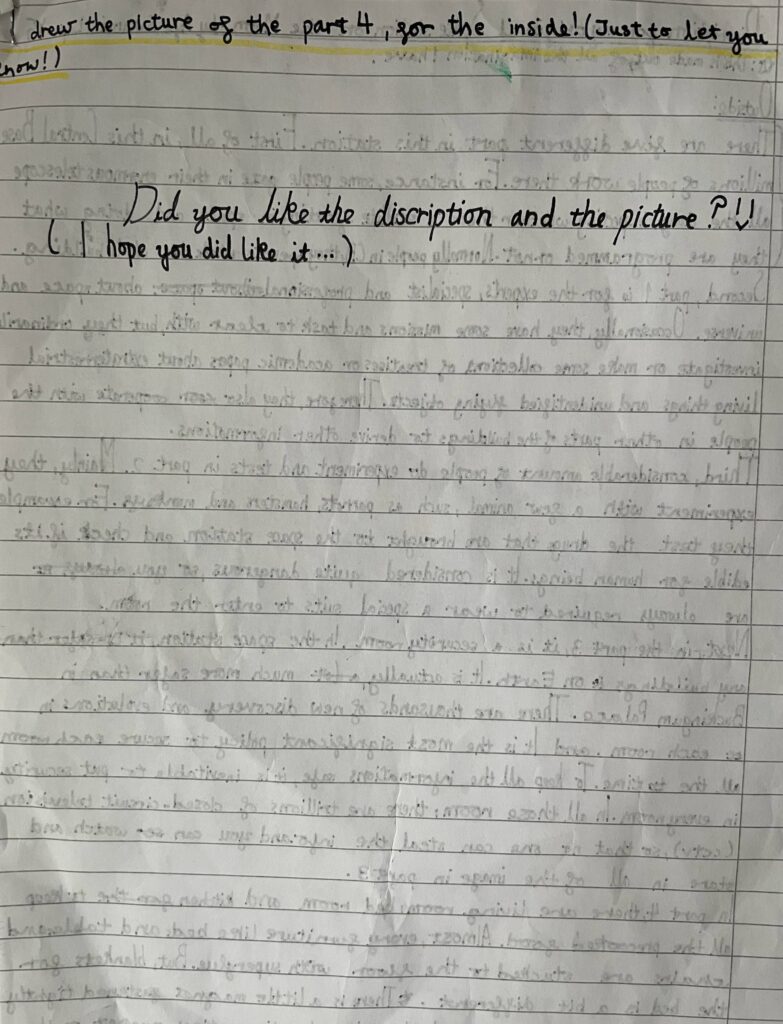
As British Science Week draws to an end, the students received their certificates as a reminder of their achievements. British Science Week is all about celebrating science and sparking enthusiasm in people. The Science Museum hopes that all the students who took part in the moon base design competition have had their imaginations and interests ignited!
Beyond the challenges of surviving on the Moon, as part of our Science Fiction series, we decided to look at what equipment an individual space explorer might need to survive these harsh and unfamiliar conditions.
Watch to find out more:
